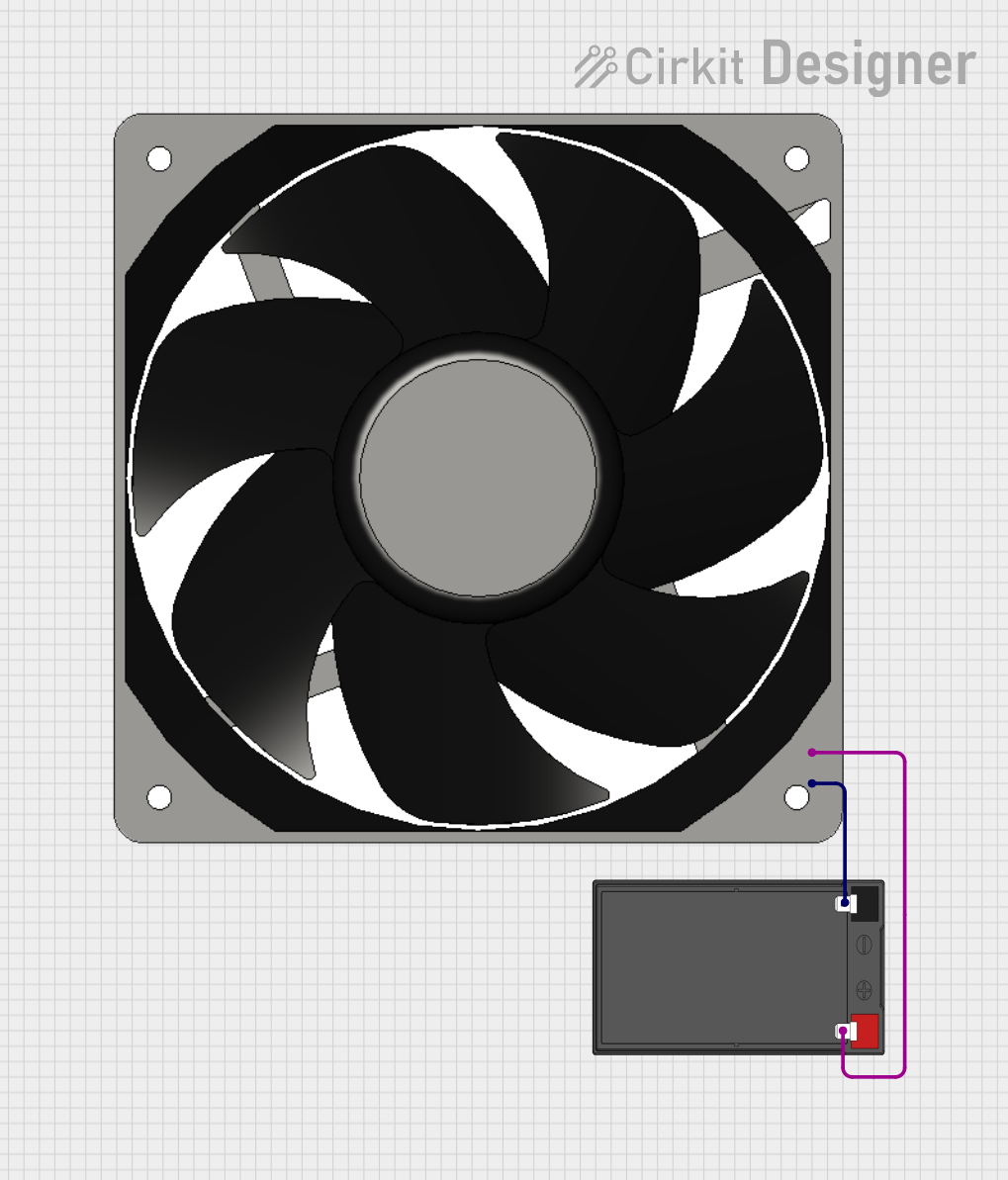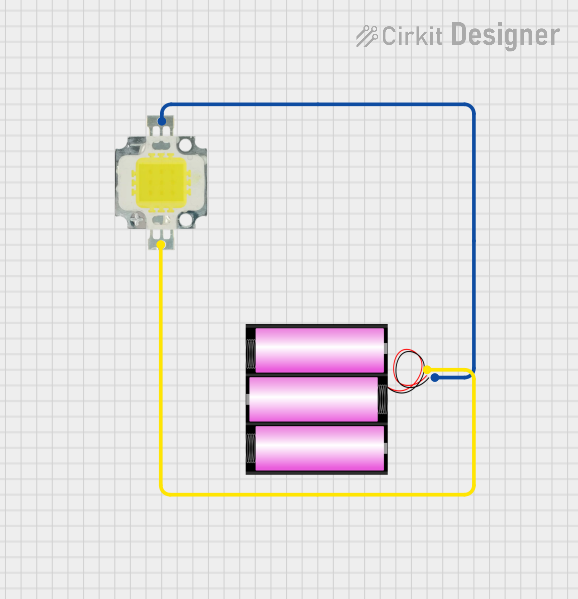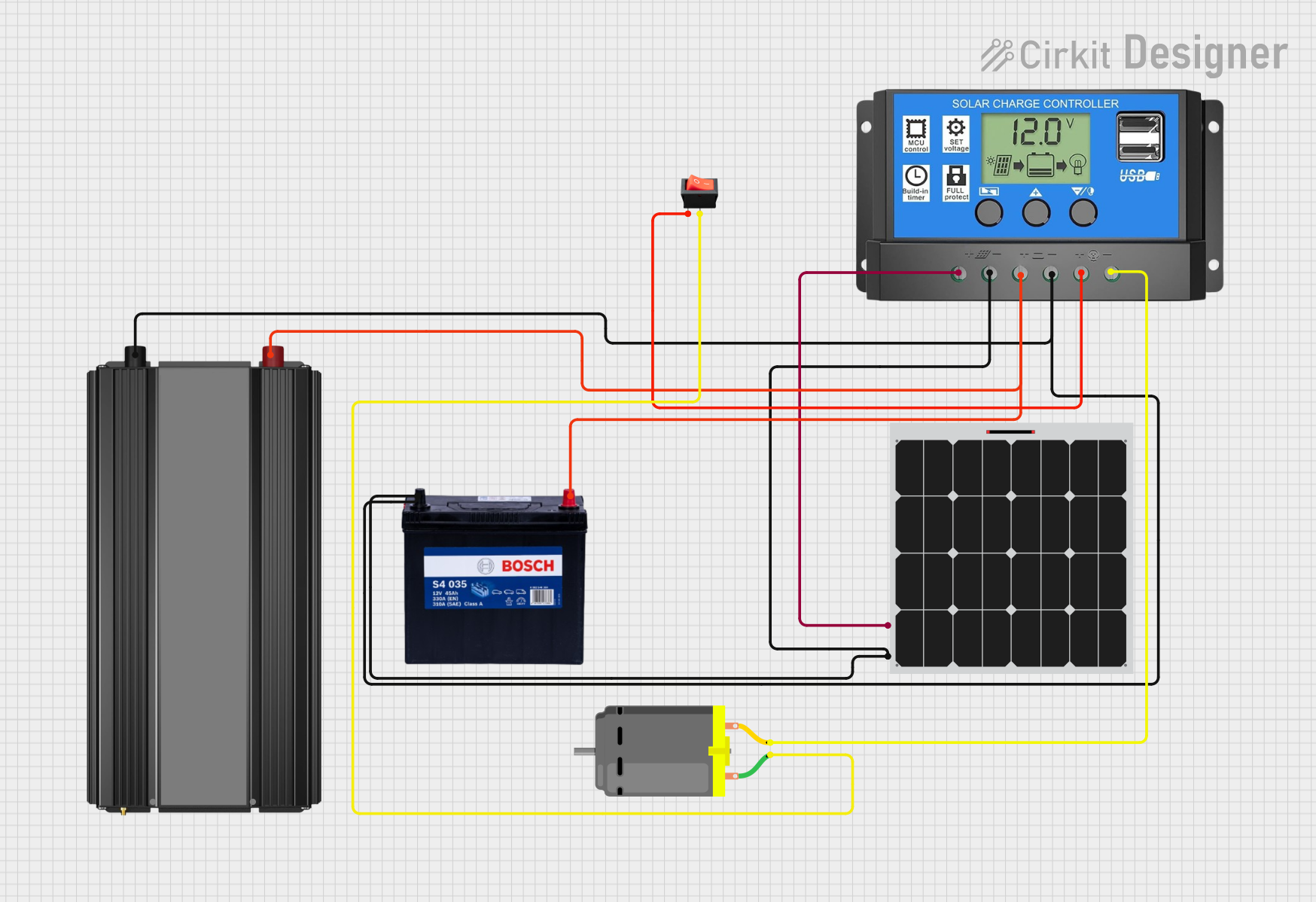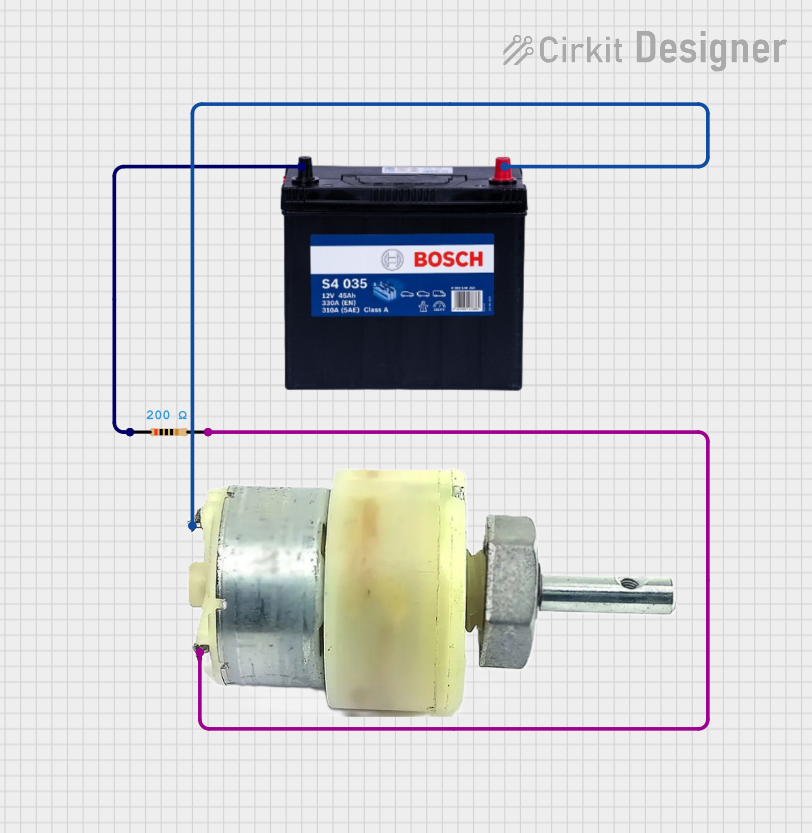
How to Use 12 V Battery: Examples, Pinouts, and Specs

 Design with 12 V Battery in Cirkit Designer
Design with 12 V Battery in Cirkit DesignerIntroduction
A 12 V battery is a power source that provides a nominal voltage of 12 volts. It is available in both rechargeable (e.g., lead-acid, lithium-ion) and non-rechargeable (e.g., alkaline) variants. These batteries are widely used in automotive systems, uninterruptible power supplies (UPS), and various electronic applications to provide reliable energy.
Explore Projects Built with 12 V Battery

 Open Project in Cirkit Designer
Open Project in Cirkit Designer
 Open Project in Cirkit Designer
Open Project in Cirkit Designer
 Open Project in Cirkit Designer
Open Project in Cirkit Designer
 Open Project in Cirkit Designer
Open Project in Cirkit DesignerExplore Projects Built with 12 V Battery

 Open Project in Cirkit Designer
Open Project in Cirkit Designer
 Open Project in Cirkit Designer
Open Project in Cirkit Designer
 Open Project in Cirkit Designer
Open Project in Cirkit Designer
 Open Project in Cirkit Designer
Open Project in Cirkit DesignerCommon Applications and Use Cases
- Automotive systems (e.g., starting, lighting, and ignition)
- Backup power supplies (e.g., UPS systems)
- Solar energy storage
- Portable electronic devices
- Robotics and DIY electronics projects
Technical Specifications
The specifications of a 12 V battery can vary depending on the type and model. Below are general specifications for a typical 12 V lead-acid battery:
| Parameter | Value |
|---|---|
| Nominal Voltage | 12 V |
| Capacity (Ah) | 1.2 Ah to 200 Ah (varies by model) |
| Chemistry | Lead-acid, lithium-ion, alkaline |
| Rechargeable | Yes (for lead-acid, lithium-ion) |
| Operating Temperature | -20°C to 50°C |
| Terminal Type | Spade, bolt, or screw terminals |
| Weight | 0.5 kg to 30 kg (varies by model) |
Pin Configuration and Descriptions
A 12 V battery typically has two terminals:
| Terminal | Symbol | Description |
|---|---|---|
| Positive | (+) | Supplies the positive voltage |
| Negative | (-) | Returns the current to the circuit |
Usage Instructions
How to Use the Component in a Circuit
- Identify the Terminals: Locate the positive (+) and negative (-) terminals on the battery.
- Connect to the Load: Use appropriate wires to connect the positive terminal to the positive input of your circuit and the negative terminal to the ground or negative input.
- Fuse Protection: Always include a fuse in series with the positive terminal to protect the circuit from overcurrent.
- Charging (for Rechargeable Batteries):
- Use a compatible charger designed for the specific battery chemistry (e.g., lead-acid or lithium-ion).
- Follow the manufacturer's recommended charging voltage and current limits.
Important Considerations and Best Practices
- Polarity: Ensure correct polarity when connecting the battery to avoid damage to the circuit.
- Overcharging: Avoid overcharging rechargeable batteries, as it can reduce their lifespan or cause safety hazards.
- Discharge Limits: Do not discharge the battery below its recommended voltage to prevent damage.
- Storage: Store the battery in a cool, dry place when not in use. Rechargeable batteries should be stored at 40-60% charge for optimal longevity.
- Safety: Avoid short-circuiting the terminals, as this can cause overheating or fire.
Example: Connecting a 12 V Battery to an Arduino UNO
To power an Arduino UNO with a 12 V battery, you can connect the battery to the Arduino's barrel jack or VIN pin. Below is an example:
// Example code to blink an LED using an Arduino UNO powered by a 12 V battery
// Pin configuration
const int ledPin = 13; // Built-in LED pin on Arduino UNO
void setup() {
pinMode(ledPin, OUTPUT); // Set the LED pin as an output
}
void loop() {
digitalWrite(ledPin, HIGH); // Turn the LED on
delay(1000); // Wait for 1 second
digitalWrite(ledPin, LOW); // Turn the LED off
delay(1000); // Wait for 1 second
}
Note: Ensure the Arduino's onboard voltage regulator can handle the 12 V input. If the battery voltage exceeds 12 V (e.g., during charging), use a DC-DC converter to step it down to a safe level.
Troubleshooting and FAQs
Common Issues Users Might Face
Battery Not Powering the Circuit:
- Cause: Incorrect polarity or loose connections.
- Solution: Double-check the wiring and ensure proper terminal connections.
Battery Drains Quickly:
- Cause: High current draw or an aging battery.
- Solution: Use a battery with a higher capacity or replace the battery if it is old.
Overheating During Charging:
- Cause: Overcharging or using an incompatible charger.
- Solution: Use a charger designed for the specific battery type and monitor the charging process.
Voltage Drops Below 12 V:
- Cause: Battery is discharged or damaged.
- Solution: Recharge the battery or replace it if it no longer holds a charge.
FAQs
Q1: Can I use a 12 V battery to power a 5 V device?
A1: Yes, but you will need a voltage regulator or DC-DC converter to step down the voltage to 5 V.
Q2: How do I know if my 12 V battery is fully charged?
A2: Measure the voltage with a multimeter. A fully charged lead-acid battery typically reads around 12.6-12.8 V.
Q3: Can I connect multiple 12 V batteries together?
A3: Yes, you can connect them in series to increase voltage or in parallel to increase capacity. Ensure the batteries are of the same type and capacity.
Q4: Is it safe to leave a 12 V battery connected to a charger?
A4: Only if the charger has an automatic cutoff or float charging feature. Otherwise, disconnect the charger once the battery is fully charged.